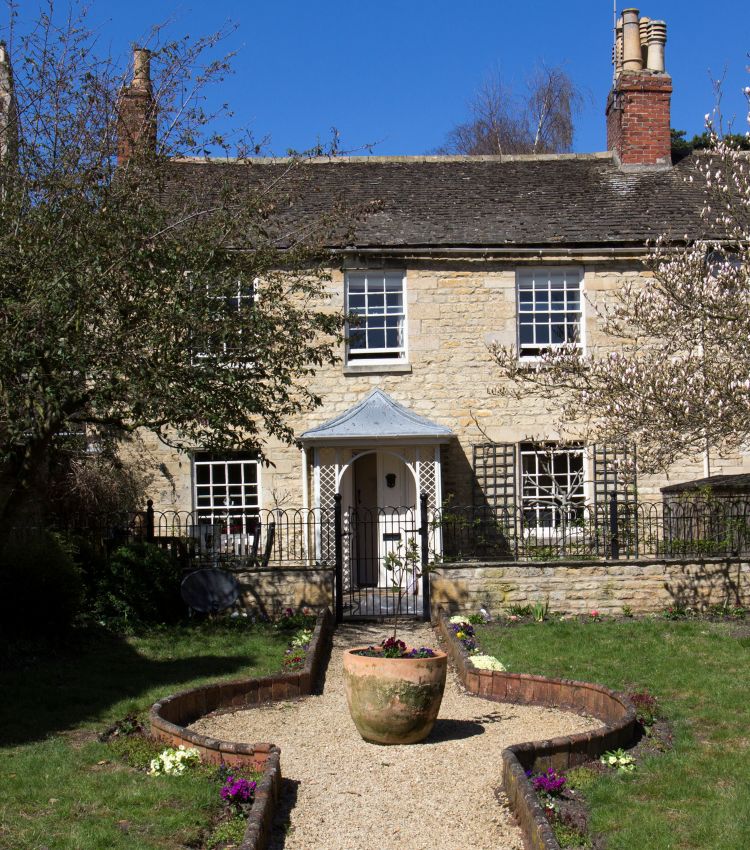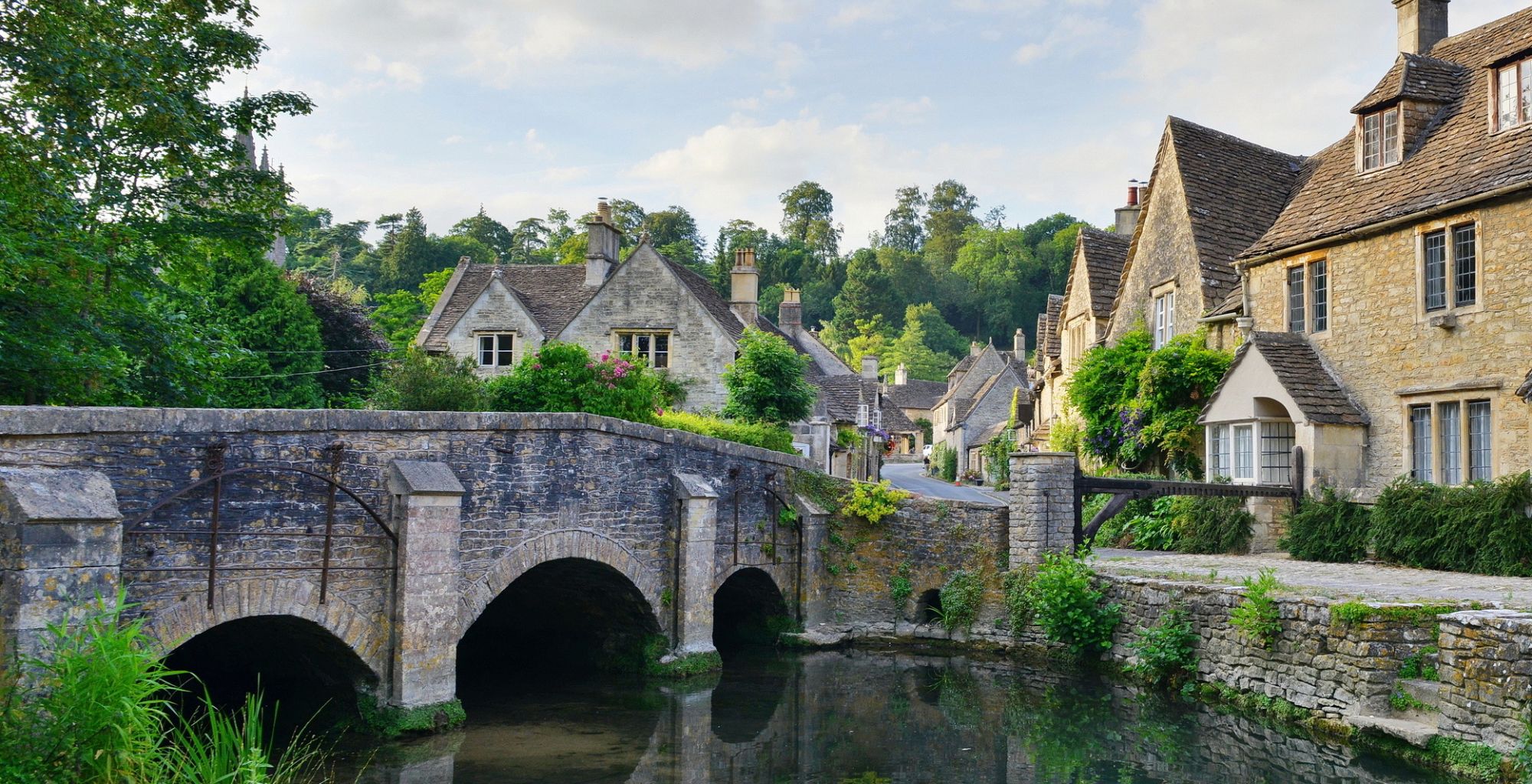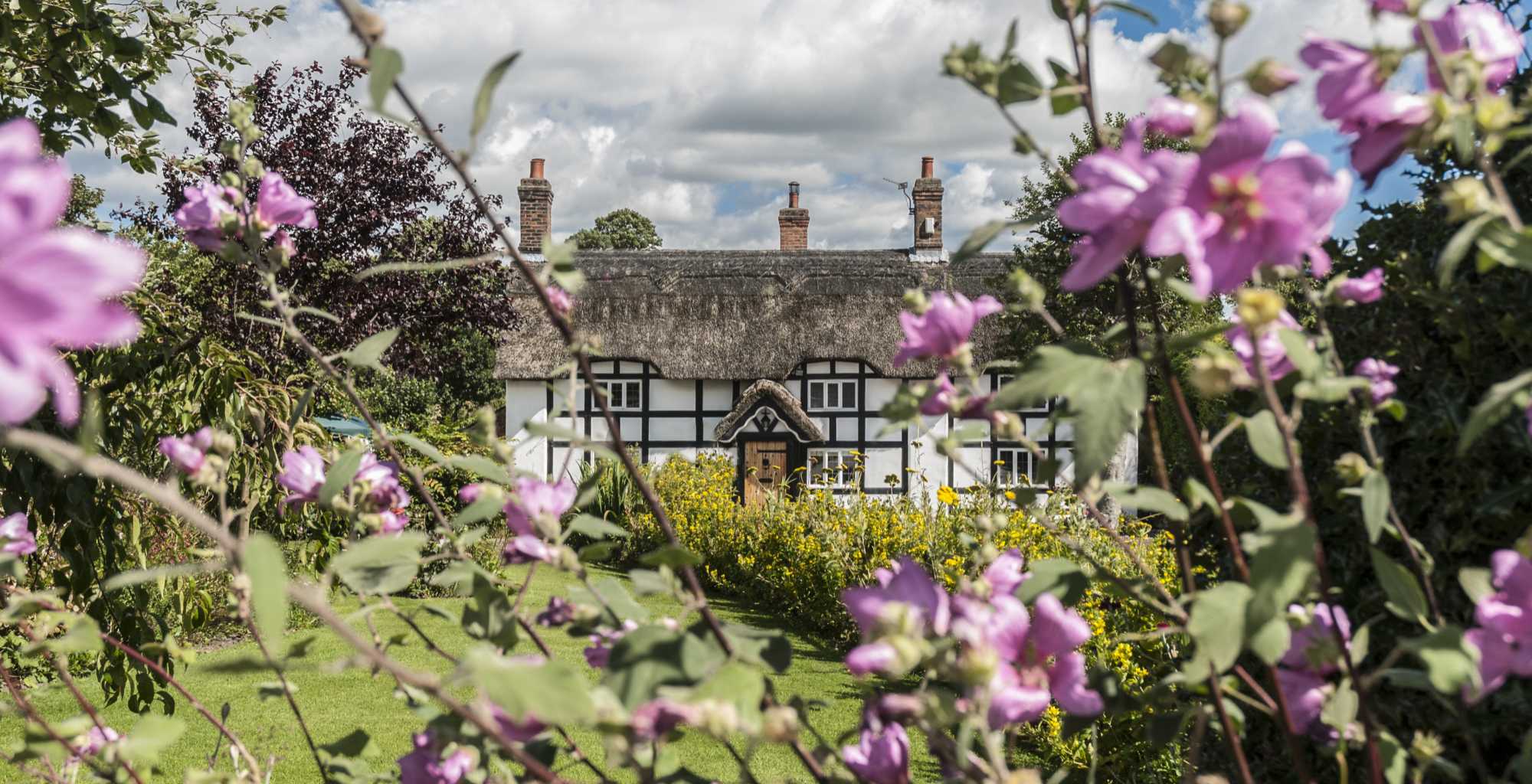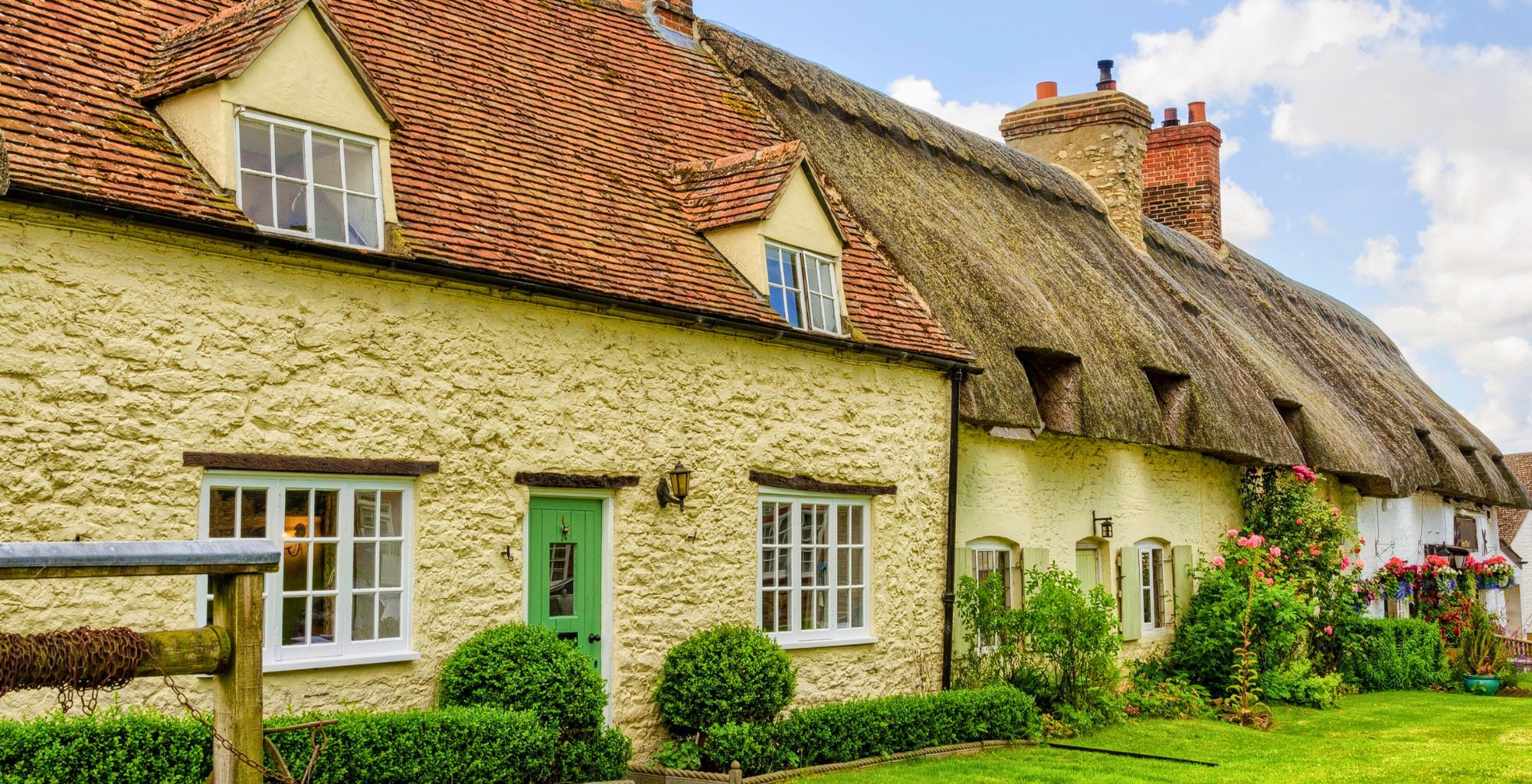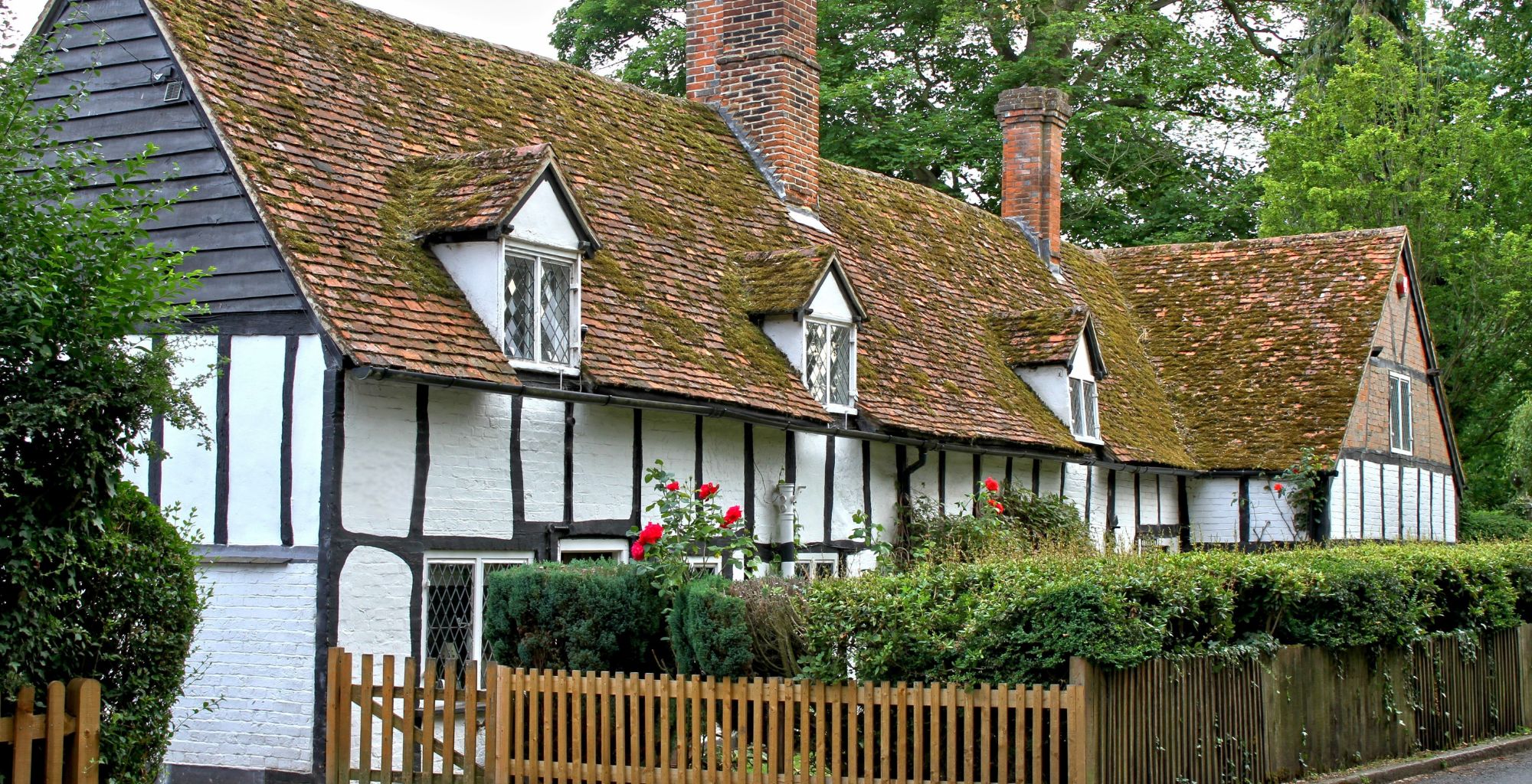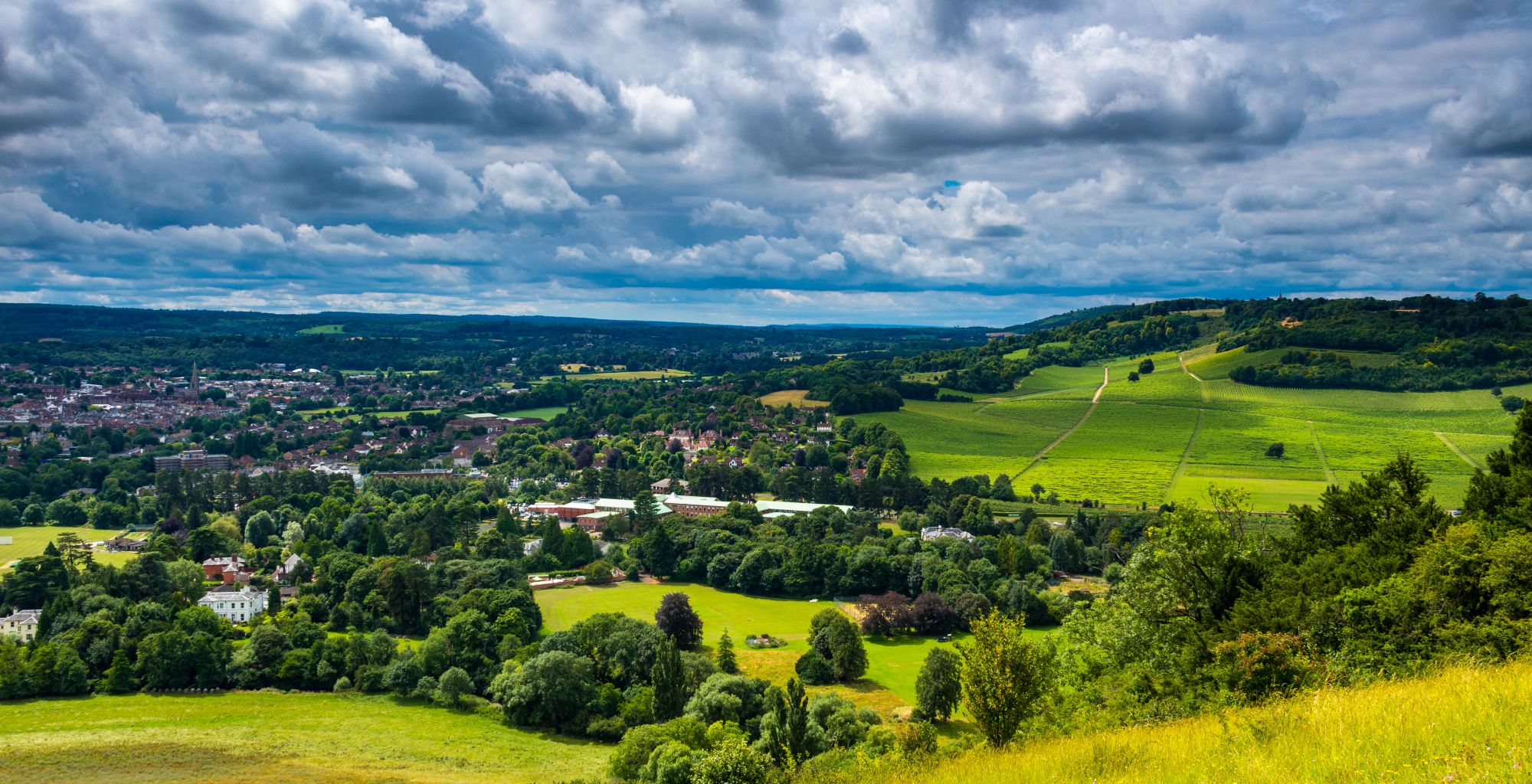Are you considering a move to the North West and want to know where the best places to live...
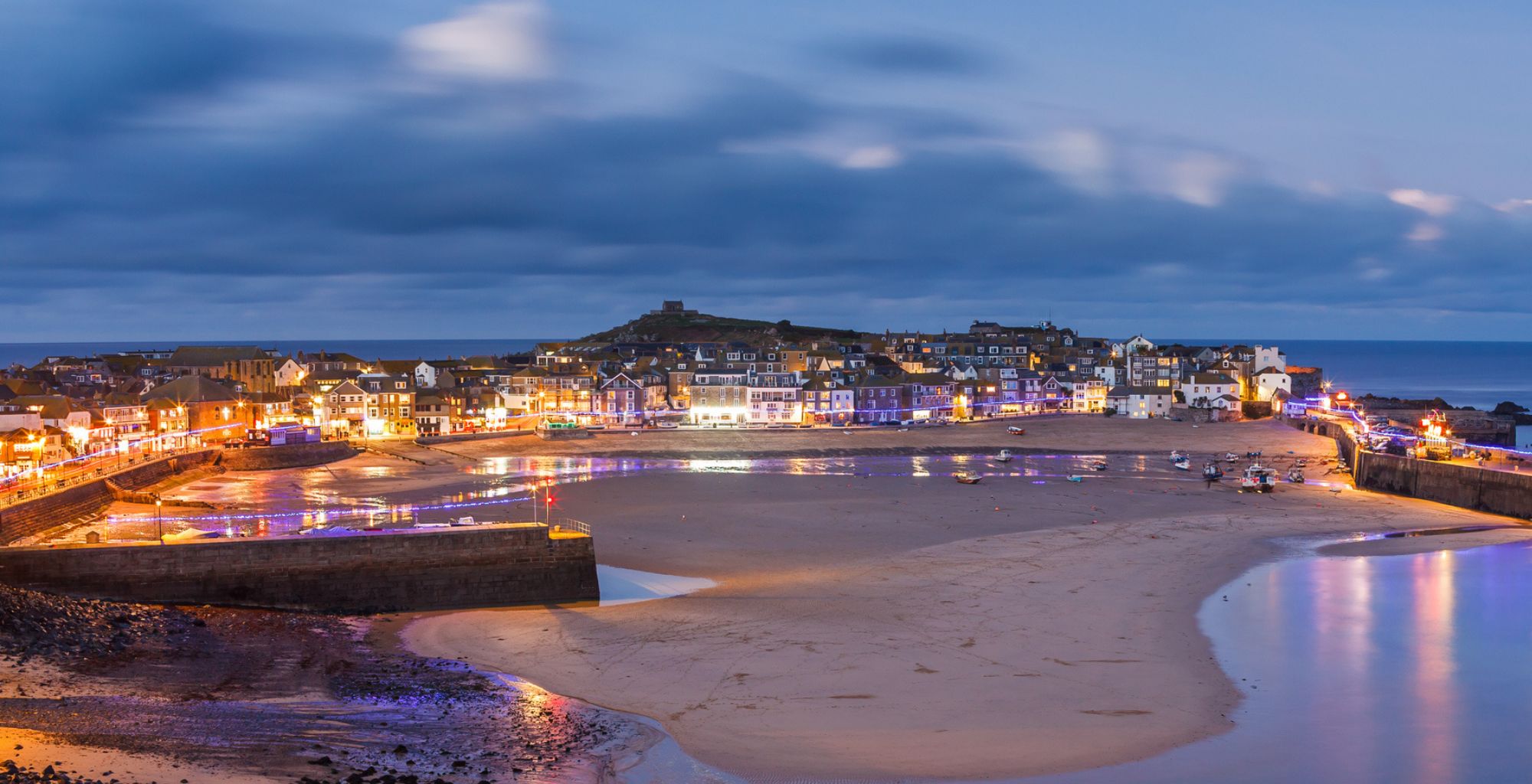
The 18 best small towns in England to live in
Are you thinking of moving home and wondering which are the best small towns in England?
Small towns can provide an idyllic living environment. You can enjoy a slower pace of life than that of larger towns and cities yet still benefit from connectivity, good amenities, and a real sense of community.
To help you choose a location that’s right for you, we have picked 18 of the best small towns in England along with some villages that are also wonderful places to live.
1. Southam, Gloucestershire
Southam is located on the outskirts of Cheltenham and the picturesque Cotswolds.
It is essentially a residential community that attracts those working in larger towns nearby and also sustains an active retirement population.
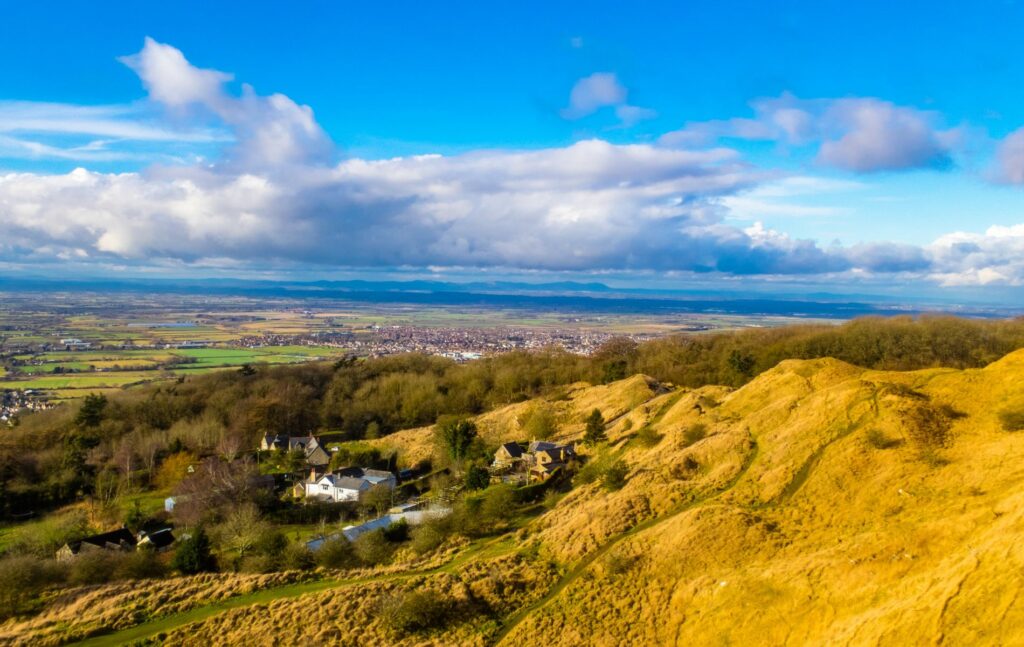
Key facts about Southam
- There is a good range of primary, secondary, and grammar schools. Most of these are located in the nearby town of Cheltenham;
- Cheltenham Ladies’ College for girls between the ages of 11 and 18 is an independent school founded in 1853. It is one of the UK’s leading schools for young women;
- Westward of Cheltenham, Southam is close to the M4 motorway, which runs between Birmingham in the Midlands and Bristol in the Southwest;
- Driving to London means cross-country travel eastwards to the M40 motorway, taking approximately 2 hours and 25 minutes.
Why live in Southam?
Southam is an ideal place to live if you are looking for a small, friendly, community-oriented place. It is one of the best small towns in England for both retirees and those still in work.
It is one of the quintessentially English hamlets of the world-famous Cotswolds.
Buildings here are beautifully constructed from the distinctive honey-coloured stone of the area.
2. Epping, Essex
Epping is a market town in the southwestern part of the county of Essex. It is surrounded by countryside yet only 17 miles to the northeast of central London.
Its strategic location so close to London attracts both commuters and those eager to retire to a village community within easy striking distance of the capital. It even has its own stop on the London Underground rail network.
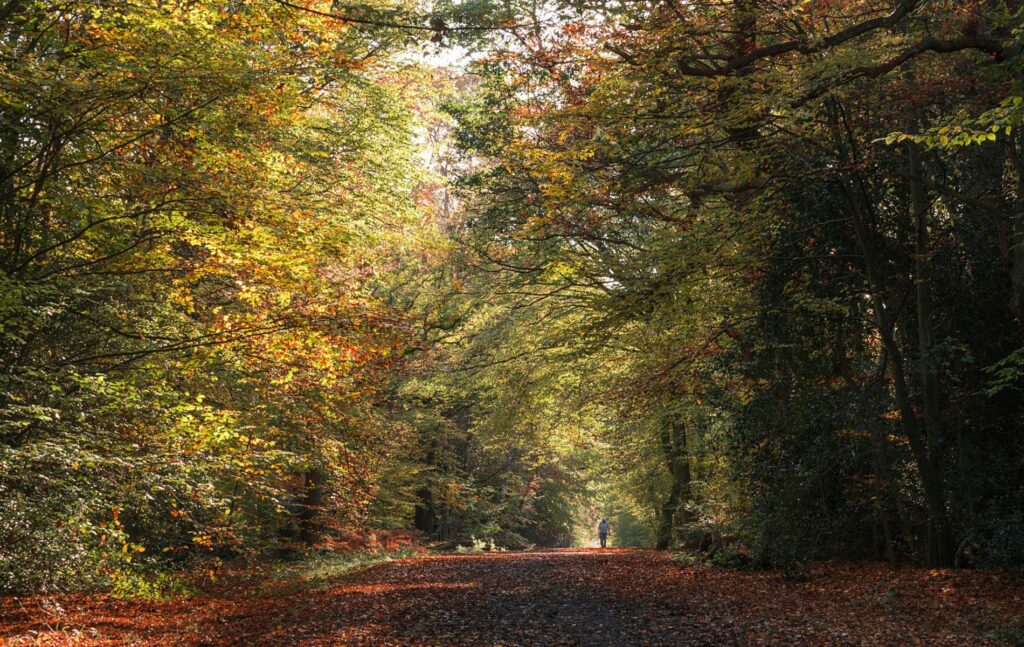
Key facts about Epping
- There are several well-regarded primary schools in the Epping catchment area. Epping St John’s School is a local co-educational academy for pupils up to 18 years of age;
- Davenant Foundation School has one of the biggest sixth forms in Essex and is located in nearby Loughton;
- Epping is the final station at the end of London Underground’s Central Line. A 38-minute ride will take you to central London’s Liverpool Street mainline station;
- Epping is just a 10-minute drive from the capital’s circular M25 motorway, five minutes to the M11 motorway, and then north to the M1 via Cambridge.
Why live in Epping?
Epping has formally been voted one of the best places to live in the UK by the Sunday Times newspaper.
The article highlighted the proximity of Epping Forest’s 6,000 acres of ancient woodland – a massive draw for joggers, dog-walkers and cyclists alike. It also highlighted the town’s bustling high street with its independent shops and cafes.
3. Windsor, Berkshire
Of the small towns in England, Windsor in the County of Berkshire also ranks amongst the best places to live.
It is an ancient town on the banks of the River Thames about 20 miles west of London. Some 40 miles northeast is the city of Oxford.
The place isn’t called Royal Windsor for no reason. The town is built around Windsor Castle and was built by William The Conqueror.
It is also one of the homes of the British Royal family to this day.

Key facts about Windsor
- There are many highly regarded primary schools in the Royal Borough of Windsor and Maidenhead;
- There are also notable secondary schools and academies including Newlands Girls’ School and Charters School;
- The world-renowned fee-paying Eton College is just 3 miles away from the centre of Windsor;
- Windsor sits alongside the M4 motorway which leads eastwards directly into London and westwards to all points west of England and as far as Wales;
- Driving time into central London (25 miles) is around one hour;
- Trains from London Paddington to Windsor take between 30 and 50 minutes. Trains from London Waterloo take approximately 55 minutes.
Why live in Windsor?
There are the royal connections, of course – and the social cachet that goes with any address in Royal Windsor – but a lot more is on offer in this wonderful town.
It has a lively nightlife, riverside restaurants, and fine shopping. Furthermore, London is just a short train ride or car drive away.
The M4 motorway is a gateway to the whole of the west of England and into Wales.
4. Frome, Somerset
Frome is a market town in the eastern part of the county of Somerset in South West England.
It sits on the eastern flanks of the Mendip Hills, some 13 miles south of the ancient Roman spa town of Bath and approximately 107 miles west of London.
Frome has been voted one of the best places to live in Britain.
It has many historic and architecturally fascinating buildings. The town centre is lined with many independent shops and attracts more than its fair share of artists and craftspeople.
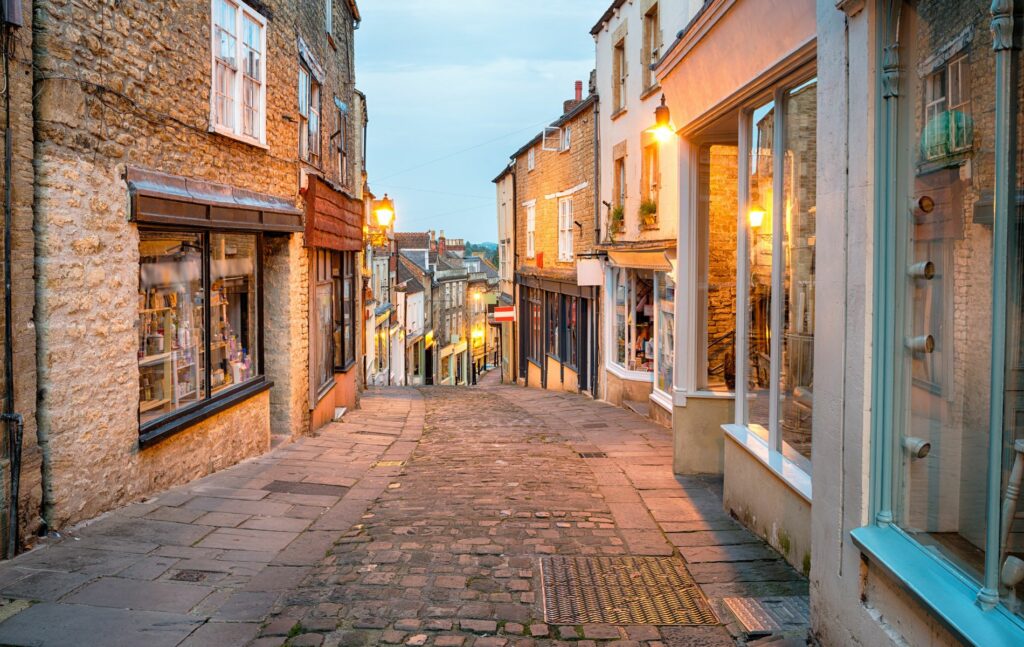
Key facts about Frome
- Access to quality schools such as St Louis Catholic Primary School, in Frome, and middle school academies (for children between the ages of 9 and 13) Selwood Academy and Oakfield Academy;
- Frome Community College – for ages 13 to 18 is also well-regarded. There are several excellent independent schools and some grammar options within commutable distance of Frome;
- Frome is some 26 miles (41 km) from junction 18 of the M4 motorway (east to London, west to the west of England and Wales). Driving time by car is approximately 2 hours – depending, of course, on traffic;
- Frome railway station is one of the oldest stations still in service in Britain. It offers direct services to London Waterloo (2½ hours), Bristol Temple Meads, and Exeter St David’s.
What makes Frome one of the nicest small towns in England?
Despite its small size – population of around 30,000 – and quaint appearance, Frome nevertheless has a vibrant nightlife in keeping with its status as the fourth largest town in Somerset.
Independent shops dominate the heart of this market town, which exudes a friendly close-knit community spirit.
5. Dorchester on Thames, Oxfordshire
In addition to the small towns in England, many desirable villages enjoy convenient connectivity to larger hubs. One such village is Dorchester on Thames, a small village of around 1,000 inhabitants. Dorchester is located around 8 miles (13 km) southeast of the county town of Oxford.
Situated at the confluence of the River Thames and the River Thame, the town is one of the oldest communities in the area. Dorchester Abbey is one of its most notable landmarks.
The village was a historic focus for travellers between Oxford and London. Maintaining that role today, it is popular for those working nearby in the university town or commuting to the capital.
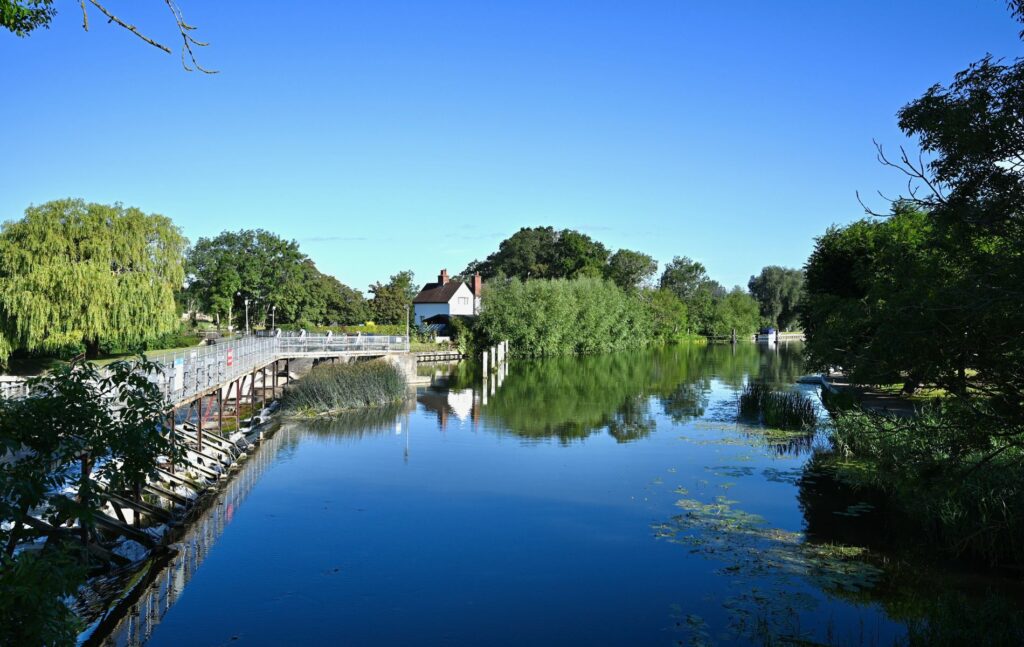
Key facts about Dorchester on Thames
- Dorchester St Birinus Church of England Primary School and St Laurence Church of England (A) School, in nearby Wallingford, are both well-regarded;
- There are many secondary schools in and around the City of Oxford. Several of the independent, fee-paying schools in the area return well above average performance results. Notable examples are d’Overbroeck’s, Oxford Sixth Form College, St Edward’s School, and Our Lady’s Abingdon, to name but a few;
- Dorchester on Thames is already to the south, so the City of Oxford can be avoided on routes by road to London. Via the M4 motorway, the capital is just 53 miles (85 km) away – typically a one-hour and 20-minute drive;
- The fastest route by bus and train goes via Reading mainline railway station to London Paddington. Journey time one hour and 36 minutes.
Why live in Dorchester on Thames?
It’s a rural setting, with local community spirit, located in the heart of England. Dorchester has easy access to the university city of Oxford and London and boasts excellent schools in the immediate neighbourhood.
6. Arundel, West Sussex
Arundel is a historic market town nestled into a steep-sided valley of the River Arun in the South Downs of West Sussex.
According to the town’s tourist information office, the place captures all that is “urban chic” and combines it with a rich 1,000-year heritage amidst country pursuits.
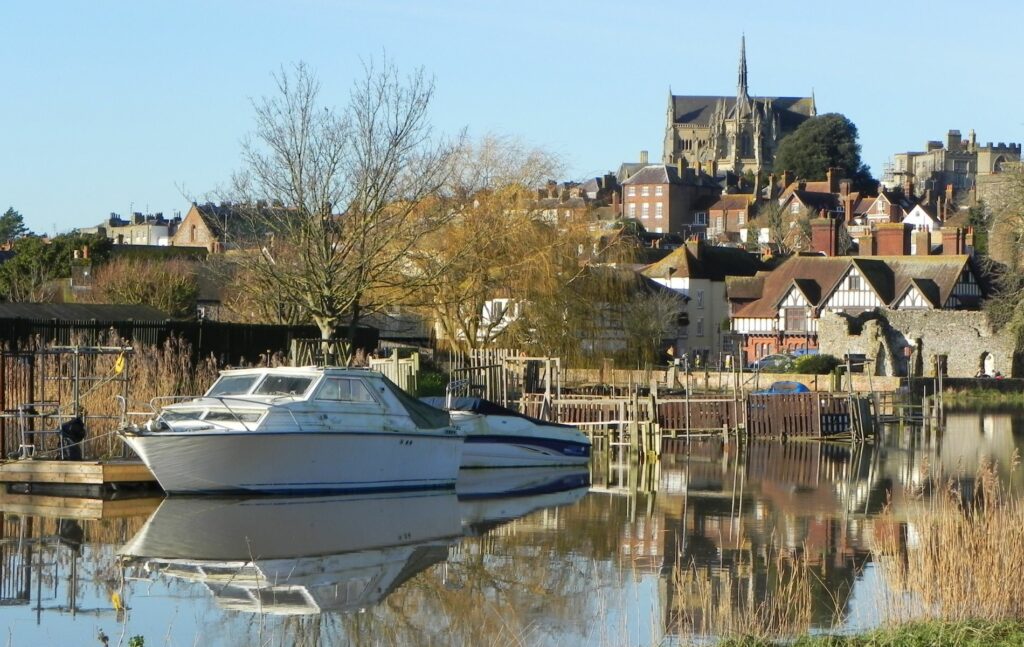
Key facts about Arundel
- Both Arundel Church of England Primary School and St Philip’s Catholic Primary School are well-regarded;
- Slindon College is a highly rated independent day and boarding school for boys aged 8 to 18. It is set in the attractive surroundings of the South Downs;
- Arundel railway station, on the eastern side of the town some 500 yards or so from the high street, runs services to London Blackfriars in journeys of around 1½ hours;
- The drive into central London takes around about the same time, travelling via Guildford and Esher.
Why live in Arundel?
The old town of Arundel features fine houses from practically every architectural period, but especially Georgian.
So much so, that those who live there might feel that they’re living on the set of a 19th-century costume drama.
London is only 65 miles (15 km) away while the coast at Littlehampton is just a 10-minute drive away.
7. Sevenoaks, Kent
Sevenoaks is at the centre of an administrative region in the west of the county of Kent.
The area lies to the southeast of central London and is surrounded by the rolling countryside of the High Weald and the North Downs – much of it woodland.
The town is also wrapped in a rich history that has left a legacy of several stately homes in the area. One of the most notable is Knole House, which was built in the 1450s.
The former home of Sir Winston Churchill, Chartwell, is also nearby, as is his oft-quoted RAF fighter station at Biggin Hill.
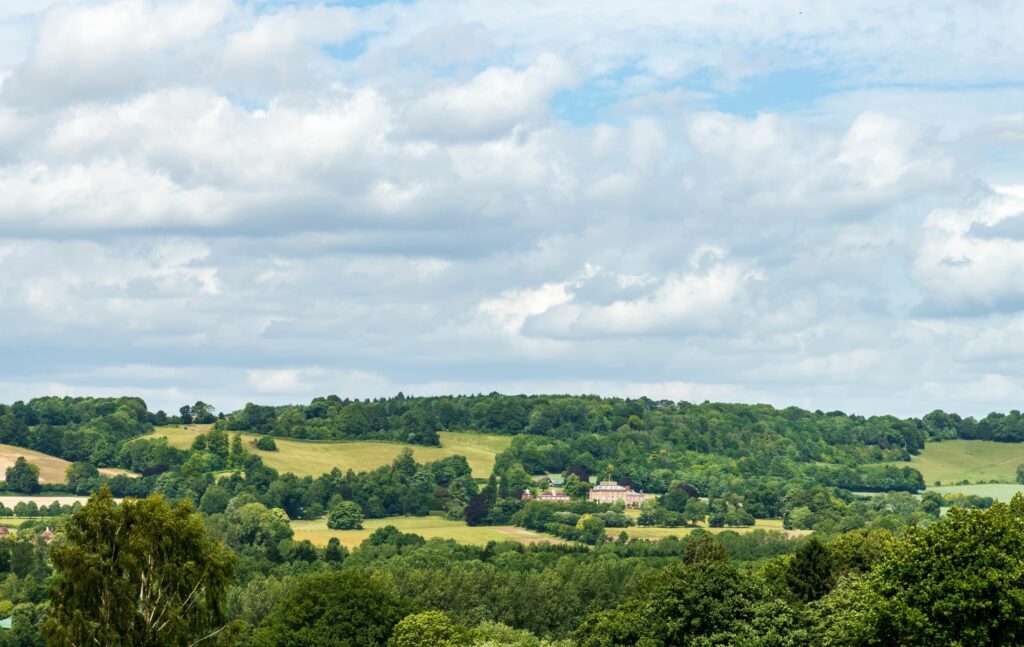
Key facts about Sevenoaks
- There are highly-regarded primary schools in and near Sevenoaks, as well as the Weald of Kent Grammar School (Sevenoaks Annex), in neighbouring Tonbridge;
- There are also numerous esteemed independent schools in the area. These include the highly selective, coeducational day and boarding Sevenoaks School voted the top independent boarding school in 2018. It currently enrols more than 1,100 students from 45 different countries;
- The ancient road between London and the Weald eventually became the A21 trunk road. This now bypasses the town of Sevenoaks, but joins London’s orbital M25 motorway within a short distance at junction 5;
- Sevenoaks is especially well served by train services to London – including London Charing Cross, Blackfriars, Victoria, and Cannon Street stations. The fastest journey time is just 34 minutes.
Why live in Sevenoaks?
It is little wonder that Sevenoaks is considered one of the best small towns in England and one of the favourite commuter towns to the south of London.
Sevenoaks still offers lots of green space, surrounded by wooded countryside that is steeped in history.
Despite this, the capital is only 34 miles (55 km) away and can be reached in around half an hour by the fastest trains.
8. St. Ives, Cornwall
Lying in the far southwest of England, St Ives is one of the most famous destinations in Cornwall.
It is known for its glorious beaches, surfing, and a local haven for internationally renowned British artists, sculptors, painters, and potters.
St Ives is described by the local tourist board as “an art capital of the world”.
So sought-after is St Ives as a place to live that it has become the second most expensive coastal resort in the British Isles.
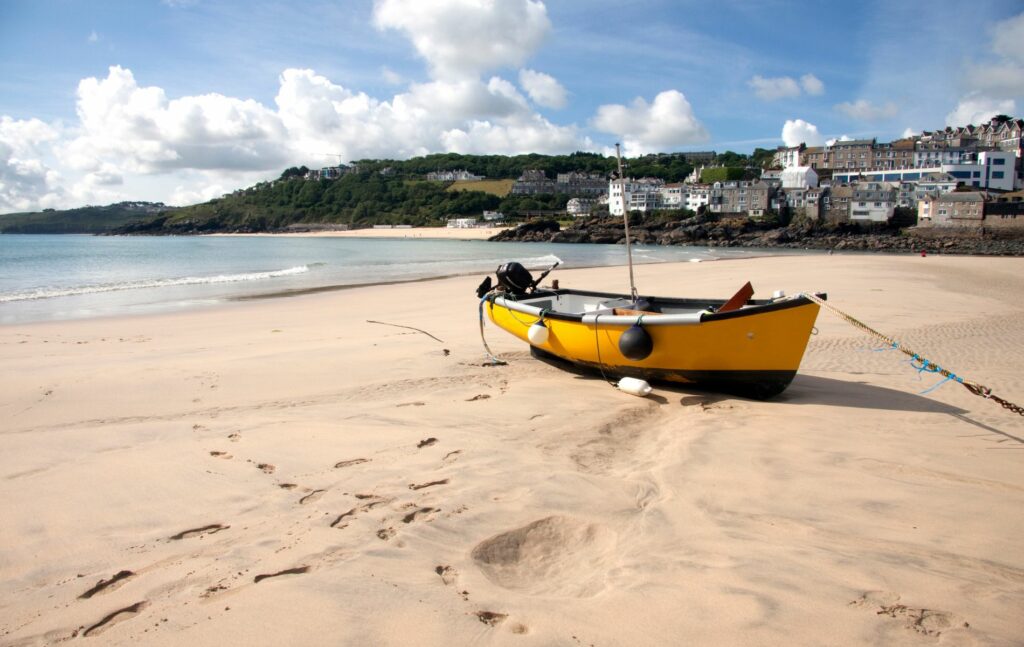
Key facts about St Ives
- For children up to the age of 11, there are well-regarded schools such as St Ives Junior School and St Uny Church of England Academy;
- There are 9 secondary schools and academies in or near St Ives, including the reputable St Ives School;
- Just four miles away is St Piran’s School. This small private school is a member of a large international educational company. Despite modest fees, the educational standards are high;
- Cornwall is the most westerly county in southern England. It is therefore best not to expect fast or especially easy transport links with the rest of the country;
- London, for example, is more than 280 miles (453 km) away and is likely to take around 5 hours to drive (depending on seasonal traffic);
- The train journey is even more complicated. It involves a drive to Truro railway station, a 2 hour and 15-minute train journey to Exeter, St David’s, and a further 3 hours and 22 minutes to London Waterloo;
- The small airport at Newquay (31 miles from St Ives), however, is served by flights from London Heathrow and Bristol.
Why live in St Ives?
If you want to move far away from the bright lights and bustle of the capital, St Ives may be the place for you.
The only drawback is that in the summertime the area can be especially crowded.
9. Banbury, Oxfordshire
Banbury is a historic market town in the north of Oxfordshire, on the banks of the River Cherwell.
It is a thriving shopping and commercial centre on the edge of the Cotswolds, surrounded by mainly rural countryside – yet only a short distance from the major conurbations of the English Midlands.
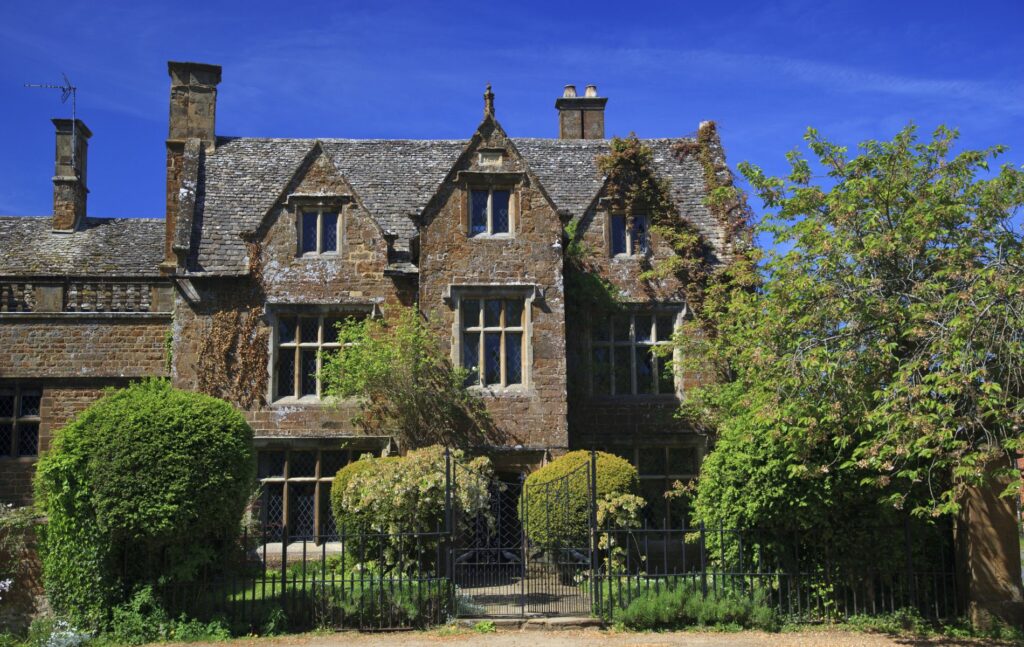
Key facts about Banbury
- There are 26 or so primary schools in and around Banbury, including William Morris Primary School. There are 9 state secondary schools and academies, including the Catholic Blessed George Napier Catholic School and Sixth Form (for all ages 11 to 18);
- Among the several reputable independent schools in the area, Sibford School is a notable coeducation establishment for all ages from 3-18 and children of all faiths, although it was founded in 1842 as a school for Quaker families;
- Banbury is 21 miles northwest of the City of Oxford, and local services offer links to the rail hub there. London (Marylebone) is just an hour away by trains that depart every 30 minutes from Banbury station and are operated by Chiltern Railways;
- The centre of Banbury is a 16-minute drive away from junction 11 of the M40 motorway – and from there, south to London (approximately 1 hour and 20 minutes) and north to the Midlands.
Why live in Banbury?
Life in Banbury has been described as like living in a large village, with all the facilities you might need, close to good schools, where you will be sure of a friendly reception.
10. Whitby, North Yorkshire
On the North Yorkshire coast, where the River Esk meets the sea, you will find the old seaport of Whitby.
It is a historic natural harbour, with evidence of ancient Roman and Saxon settlements nearby.
It was the hometown of the famous English explorer Captain James Cook, who went on to explore and map Newfoundland, Australia, New Zealand, and Hawaii.
Whitby is within the boundaries of the North York Moors National Park, so tourism is today’s principal economic driver, supported by what remains of the North Sea fishing industry.
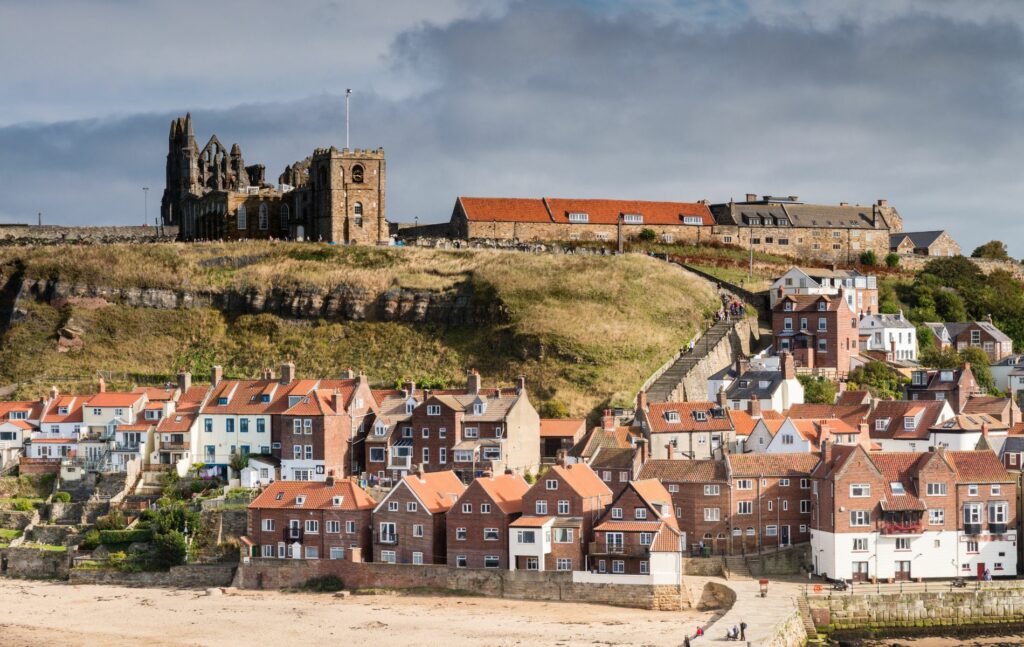
Key facts about Whitby
- There are six quality primary schools and academies in Whitby, and in the public secondary sector, Caedmon College and Whitby Sixth Form;
- One of the country’s leading independent schools for ages 3 to 18 is Yarm School, approximately 40 miles to the west of Whitby. Closer to Whitby itself is the smaller, independent Fyling Hall School;
- Because of its location on the east coast, in an area of natural beauty, Whitby is not especially well served by transport links. It is however still a popular tourist destination throughout most of the year;
- Reaching Whitby from London and the south means taking the M1 motorway as far as junction 44 for York and then across country over the North York Moors to the coast;
- To get to Whitby by train will also involve changing at other rail hubs, such as Middlesborough, Newcastle, or Sunderland.
What makes Whitby one of the best small towns in England?
It is off the beaten track but steeped in maritime history and surrounded by the stunning natural beauty of moorland and coastline.
11. Great Budworth, Cheshire
Great Budworth is a hamlet – of barely 300 souls – in the far northeast corner of the county of Cheshire in the northwest of England.
The village describes itself as “the most picturesque village in Cheshire”. It takes its name from the old Saxon words “bode” (dwelling) and worth (place by the water). The latter is a reference to nearby Pickworth Mere and Budworth Mere.
Great Budworth is almost impossibly pretty and harks back to some rural idyll of life in the northwest of England’s gently undulating Cheshire Plain.
For many, it may be the perfect place to get away from it all in retirement.
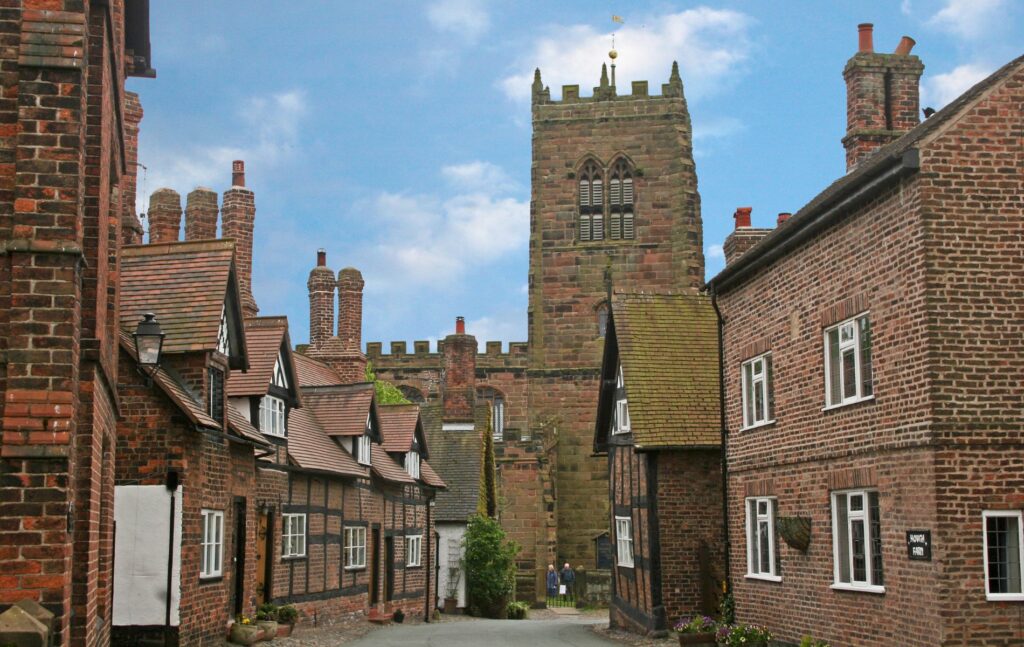
Key facts about Great Budworth
- The are many reputable primary schools in and around Great Budworth including Great Budworth Church of England Primary School and Wincham Community Primary School in Northwich, 4 miles (6.4 km) to the south of the village;
- Secondary schools are also in Northwich, including St Nicholas Catholic High School. Notable independent schools in Northwich include The Grange School and Cransley School;
- Although it is situated in one of the most rural parts of Cheshire, it is well connected by road to major parts of the UK;
- It is only a 5-mile (8 km) or 12-minute drive to the M6 motorway which runs to the major conurbations of Manchester and Liverpool to the north and the Midlands to the south.
Why live in Great Budworth?
Great Budworth offers all the peace and tranquillity of a Cheshire village, with the close community spirit that goes with such a small settlement, surrounded by lush farmland.
Thanks to the nearby motorway network, much busier parts of the UK are never that far away.
12. Bakewell, Derbyshire
Bakewell is a small market town in the Dales of the county of Derbyshire, some 13 miles (21 km) south-west of the city of Sheffield.
Thanks to its location in the southeast corner of the Peak District National Park, it is a popular tourist destination. It is also home to the iconic confection, the Bakewell Pudding.
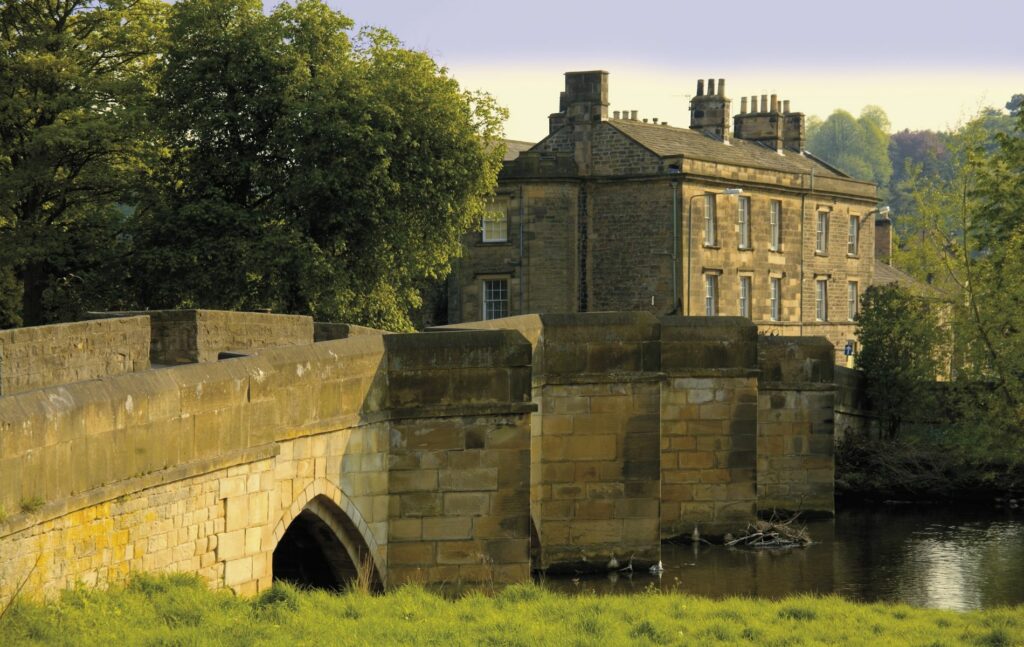
Key points about Bakewell
- There are well-regarded principal primary schools in Bakewell and good options for secondary (ages 11 to 18) including Lady Manners School;
- Bakewell is also home to the independent preparatory school and college (pupils from the ages of 3-16) St Anselm’s;
- Thanks to its location just north of the Midlands, Bakewell is well served by the motorway network. The car journey from London, for example, takes roughly 3 hours via the M1 motorway (leaving at the junction for Matlock);
- Bakewell to London by train – a distance of 134 miles (216 km) – takes an average of approximately four hours.
What makes Bakewell one of the most popular small towns in England?
Amongst many things, it is the attraction of living within the Peak District National Park and Derbyshire Dales, with their attractive stone cottages, rugged moorland, and green valleys that make Bakewell so popular.
13. Stamford, Lincolnshire
Stamford is in the county of Lincolnshire in the East of England but also borders the east Midlands – some 31 miles (50 km) to the east of Leicester.
It is approximately 100 miles (161 km) from London.
On the old Great North Road, around halfway between London and York, Stamford grew rich from the English wool trade and retains many fine buildings.
The place describes itself as “the finest stone town in England”. The town boasts 11 churches, 30 pubs, 20 restaurants, and more than 10 quality hotels and guest houses.
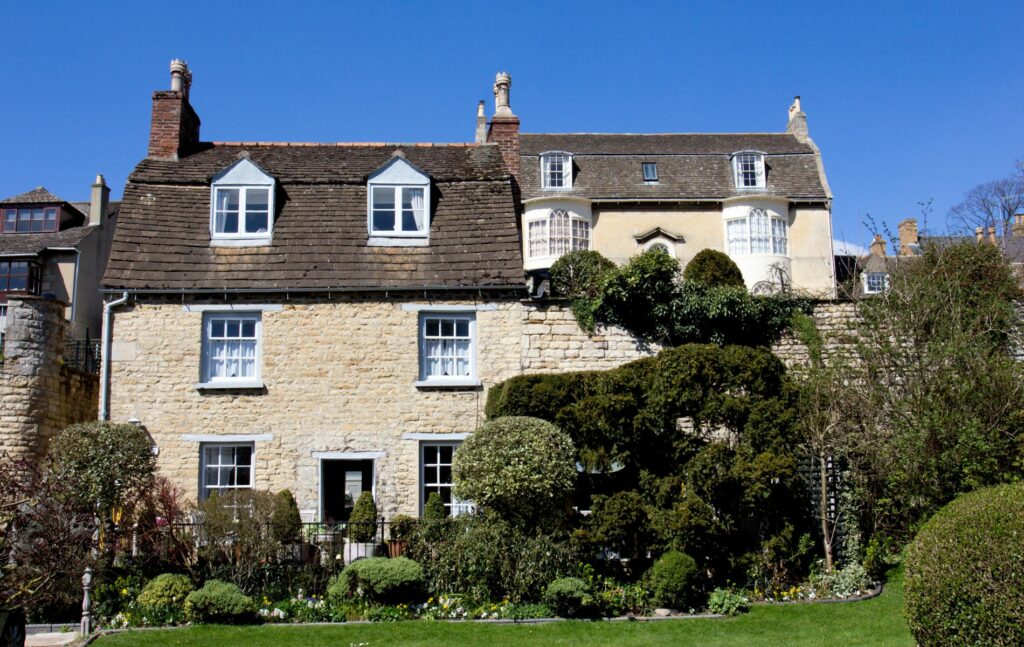
Key facts about Stamford
- There are seven primary schools in Stamford, notable examples are Great Casterton Church of England Primary School and The Bluecoat School;
- Reputable public secondary sector schools include Casterton College Rutland and Stamford Welland Academy;
- Some of the leading names in the private sector are within 20 miles of Stamford. These include Uppingham, Oundle, and Oakham;
- As mentioned, Stamford is on the Great North Road, now the A1(M) trunk road between London and the north;
- The 100-mile or so drive into central London typically takes less than 2 hours. The fastest trains from Stamford to London Kings Cross take one hour 13 minutes.
Why live in Stamford?
It is a well-connected, historic town on the eastern edge of the Midlands.
The many independent shops that line the quaint streets of the town trade under a common banner of “ancient and vibrant”.
If you have children of school age, you may be spoilt for the choice of excellent public and private schools.
14. Bamburgh, Northumberland
Bamburgh is a village on the north Northumberland coast.
Steeped in history, it is battered by the storms and waves of the North Sea, which lashes the ever-present silhouette of Bamburgh Castle.
In 2017, Bamburgh became the second most sought-after holiday destination for British “staycationers”.
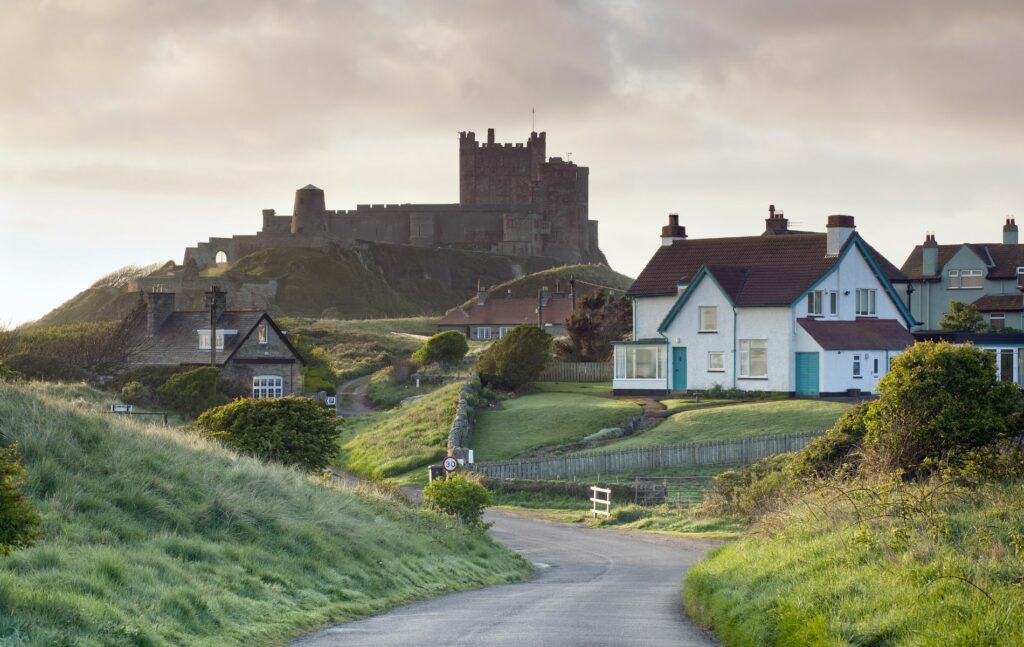
Key facts about Bamburgh, compared to other small towns in England
- There are two well-regarded primary schools within a 5-mile radius of Bamburgh – Seahouses Primary School and Belford Primary School;
- Other reputable schools in the area include Glendale Middle School 12 miles from Bamburgh. Also, the Duchess’s Community High School (for ages 16 to 18) is some 18 miles away;
- Leading independent schools are Longridge Towers School (to the north, in Berwick-upon-Tweed) and Mowden Hall School, in the south of Northumberland;
- Although relatively remote, on England’s northeastern coast, Bamburgh is nevertheless just a few miles from the old Great North Road from London to Scotland – now the A1 trunk road which runs the length of Northumberland;
- Trains from London Kings Cross take a total of 5 hours and 22 minutes.
Why live in Bamburgh?
It is no longer the busy port that it was in the 13th century, so the pace of life in Bamburgh is today altogether more relaxed.
If golf is your sport, that active relaxation is likely to take place at Bamburgh Castle Golf Club.
15. Altrincham, Cheshire
Altrincham is in the county of Cheshire and about 8 miles to the south of the conurbation of Manchester.
This leafy and up-market suburb is among the best small towns in England with some of the most expensive property prices outside of London and the southeast.
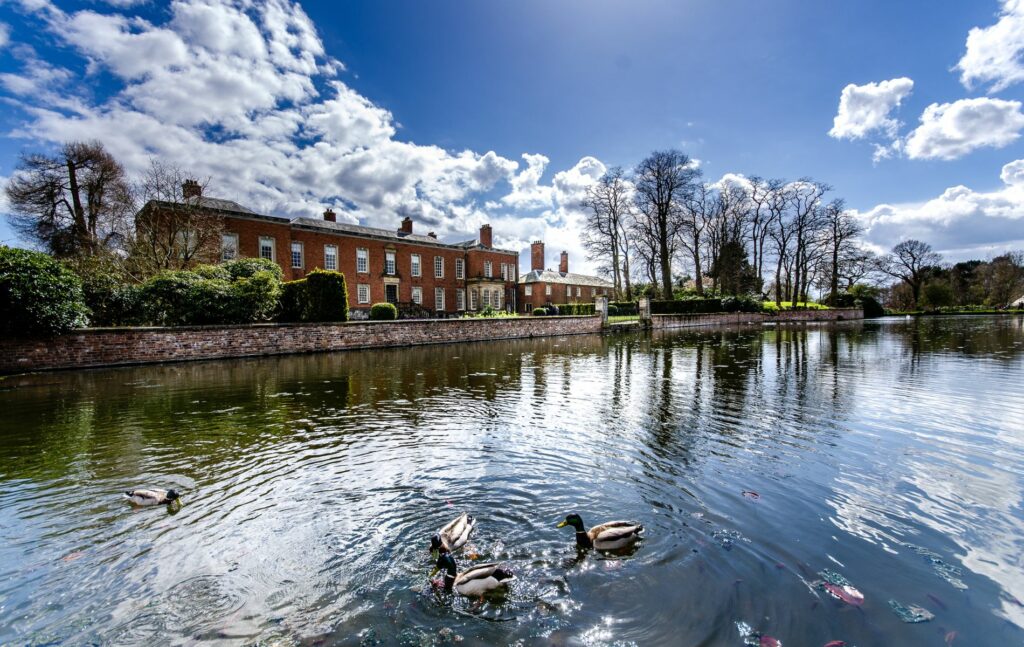
Key facts about Altrincham
- There are several primary schools in Altrincham and nearby Sale of high standard;
- Altrincham Grammar School for Boys and Altrincham Grammar School for Girls are also highly regarded, as are Blessed Thomas Holford Catholic College and Brentwood School and College (for ages 11 to 19);
- Altrincham lies alongside the M56 motorway which links Manchester and Liverpool – and from that motorway, onto the M6 for routes south to the Midlands;
- Rail services link the Altrincham and Navigation Road stations with Chester via Northwich, and with Manchester via Stockport;
- Altrincham is also a terminus for Greater Manchester’s Metrolink light rail system.
Why live in Altrincham?
Altrincham is one of the most desirable places to live in northwest England.
It is well connected by road and rail and has some outstanding schools in the immediate area.
16. Cirencester, Gloucestershire
Cirencester is towards the southern edge of the county of Royal Gloucestershire.
Because of its proximity, it is often referred to as the Capital of the Cotswolds.
During Roman times – when the place gained its name – Cirencester was the second-largest town in the British Isles.
From its earlier prosperity based on the wool trade, Cirencester today serves as an economic and cultural hub for the surrounding villages and a commuter town for bigger places such as Gloucester, Swindon, Cheltenham, and Stroud.
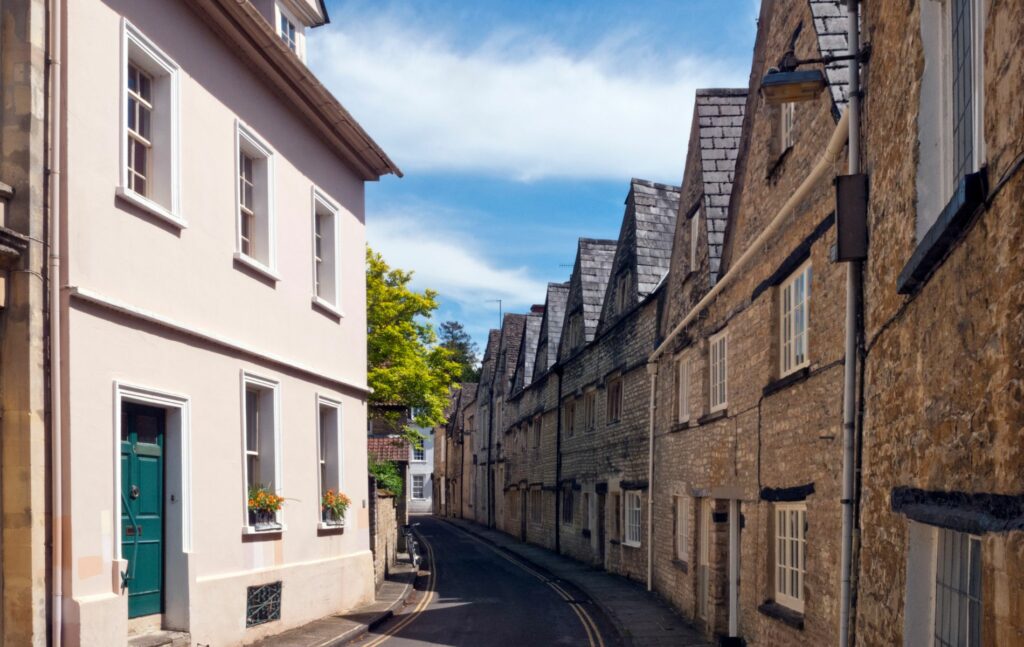
Key facts about Cirencester
- There are seven primary schools in or near Cirencester, including the highly regarded Powell’s Church of England Primary School;
- For quality sixth-form education, Cirencester College for those aged 16+ is a popular choice;
- Hatherop Castle Preparatory School is a small independent school for children aged from 2 to 13. Rendcomb College is an award-winning coeducational independent school for pupils from the ages of 3 to 18;
- Cirencester lies at the hub of a whole network of roads linking Gloucester, Cheltenham, Leamington Spa, Oxford, Wantage, Swindon, Chippenham, Bristol, Bath, and Stroud;
- It is approximately 20 miles (32 km) to the M4 motorway (and eastwards to London) at Swindon.
Why live in Cirencester?
Cirencester has been voted one of the happiest places to live in the UK.
17. Keswick, Cumbria
Keswick is a market town in Cumbria (formerly Cumberland) and acts as the major hub for tourism in the northern Lake District National Park.
This is a large tract of land in the far northwest of England, close to the border with Scotland.
That role as a major centre for tourism is emphasised by the fact that the Lake District is England’s largest national park and has now achieved World Heritage status.
The park is home to England’s highest mountain – Scafell Pike – and its deepest lake – Wastwater.

Key facts about Keswick
- There are five primary schools in Keswick and neighbouring villages. The secondary school Keswick School has been previously rated the sixth-best non-selective state school in the North West and the top state school in Cumbria;
- Keswick is on the A66 trunk road linking Workington and Penrith, as well as the A591, linking the town to Windermere, Kendal, and Carlisle (via the A595). At Penrith – some 18 miles (29 km) to the east of Keswick – the road meets the M6 motorway and connections to the Midlands.
Why live in Keswick?
Although you are likely to feel somewhat off the beaten track, it is difficult to imagine anywhere else in England surrounded by such dramatic scenery.
18. Odiham, Hampshire
Odiham is a pretty village in the north of Hampshire and features in some of the earliest English history.
As a royal manor, it was the first location in Hampshire to be recorded in the Domesday Book – commissioned by William I (the Conqueror) in the early 11th century.
Today, Odiham is a friendly, bustling market town that has been absorbed into the commuter belt of north Hampshire.
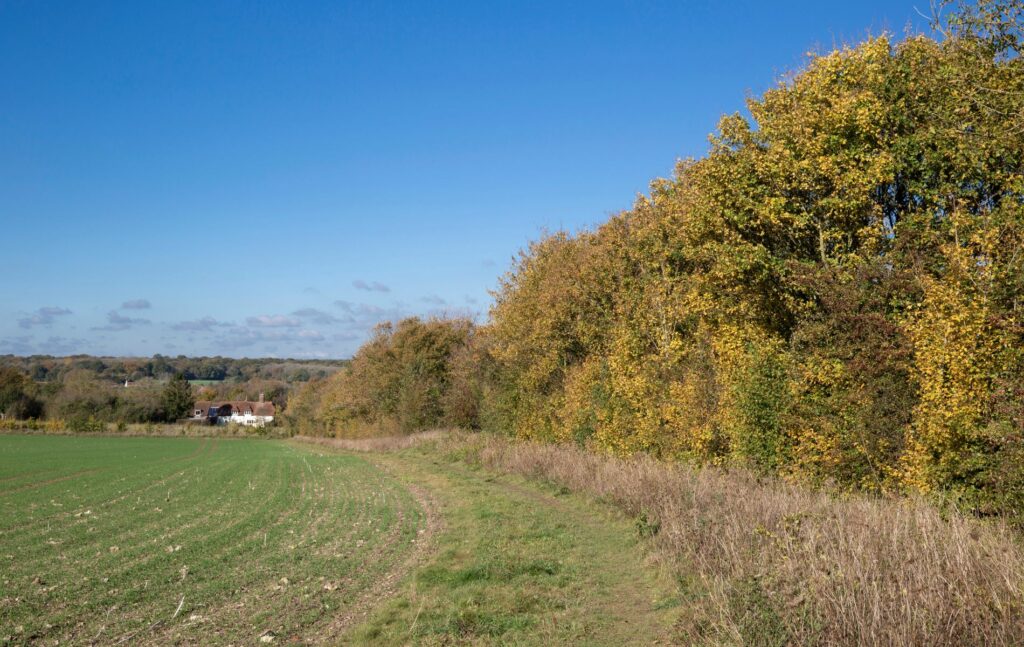
Key facts about Odiham
- Well-regarded Junior schools include Mayhill Junior School in Odiham and nearby Hook Junior School;
- The principal state secondary school in Odiham is Robert May’s School which is also well-regarded;
- One of the leading independent schools in this part of Hampshire is Sherfield School. The school is some nine miles (14.5 km) from Odiham;
- Odiham is ideally situated for connections to the principal motorway network in southern England. It is adjacent to junction 5 of the M3 – which runs eastwards into central London and west to Basingstoke and Southampton;
- Odiham is also just 3½ miles (5.6 km) from Winchfield railway station. From there around 40 trains a day depart for London Waterloo (for a journey of a little over an hour).
Why live in Odiham?
Odiham is the administrative district of Hart Council. In survey after survey Hampshire’s Hart District has been voted the most desirable place to live in the UK.
Find the perfect property in one of the small towns in England
This is just a sample selection of the small towns in England. There are many more quaint, picturesque places to live across the country including plenty of villages with more amenities.
Our buying agents have a deep geographical knowledge of their regions and would be delighted to offer guidance when you’re considering the best place to live.
